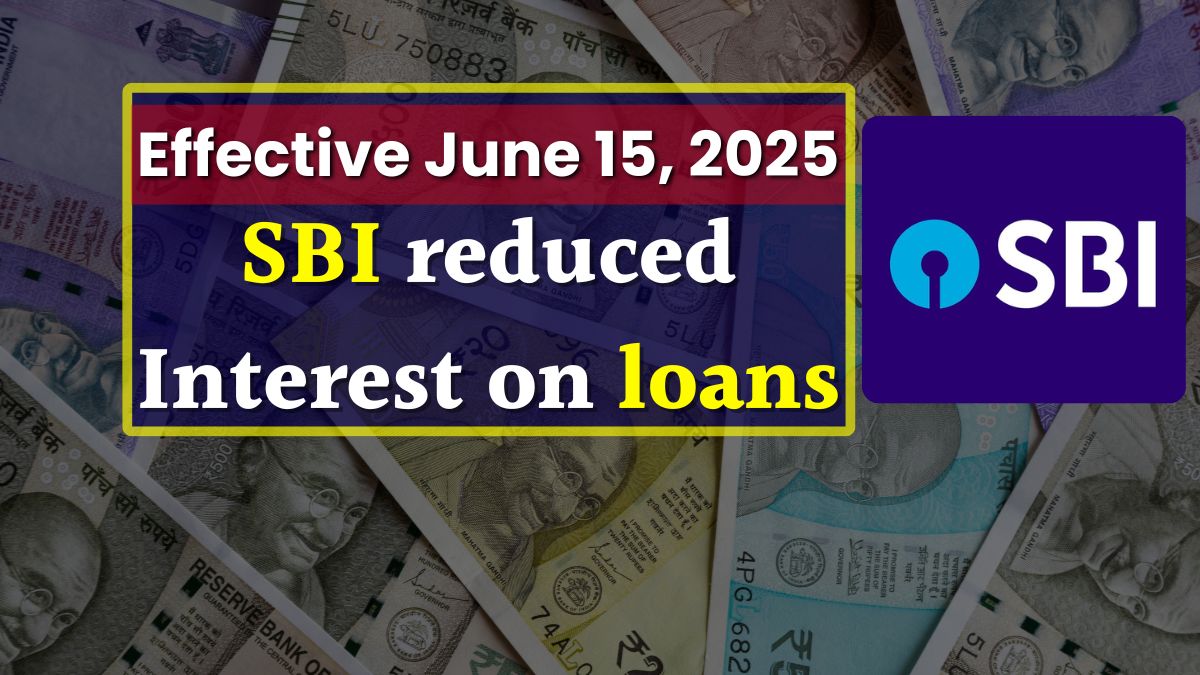If your monthly home loan EMI has been squeezing your budget lately, you’re not alone. For many of us, owning a home feels like chasing a dream that keeps slipping away. And every time interest rates climb, that dream feels even further out of reach. But there’s finally a little light at the end of the tunnel SBI has reduced its home loan interest rates, and that could mean serious savings for you.
Let’s break down what this means in real terms and how you can take full advantage of this relief.
What’s Changed: SBI Cuts EBLR and Home Loan Rates
State Bank of India (SBI), the largest public sector bank in the country, just announced a cut of 50 basis points (0.50%) in its External Benchmark Lending Rate (EBLR). This follows the RBI’s repo rate reduction that kicked in on June 15, 2025.
What’s the new EBLR?
It’s been reduced from 8.65% to 8.15%
So why does this matter to you?
Because your home loan interest is tied directly to the EBLR. When that goes down, so does your EMI. It’s as simple—and as powerful—as that.
Wait, What’s EBLR Anyway?
EBLR (External Benchmark Lending Rate) is the rate banks use to set interest on loans like home loans. It’s directly linked to the RBI’s repo rate. So, when the RBI cuts rates to stimulate the economy, banks like SBI follow by reducing their lending rates.
This system ensures more transparency—and that you actually feel the benefit when the economy gets a boost.
New SBI Home Loan Interest Rates (Effective June 15, 2025)
If you’re wondering how much you might save, here’s a quick look at SBI’s updated rates across different loan types:
| Loan Type | New Interest Rate |
|---|---|
| Home Loan (Term Loan) | 7.50% – 8.45% |
| Home Loan Maxgain (Overdraft Mode) | 7.75% – 8.70% |
| Top-Up Loan | 8.00% – 10.50% |
| Top-Up Overdraft Loan | 8.25% – 9.20% |
| Loan Against Property (P-LAP) | 9.20% – 10.50% |
| Reverse Mortgage Loan (RML) | 10.55% |
| Yono Insta Top-Up Loan | 8.35% |
What This Means for You and Your EMI
Let’s say you’re paying ₹25,000 per month on your current home loan. With this 0.50% cut, your EMI might drop by a few hundred rupees each month.
Now, that might not sound like a lot—but over 20 years, that’s thousands saved. And if you’re just starting to look for a home loan, this is the right time to grab a more affordable deal.
Here’s what you get with this move:
- Lower EMIs – Easier on your monthly budget
- Cheaper new loans – Better affordability if you’re planning to buy a house
- Opportunity to refinance – Consider switching your existing loan to SBI if their new rates beat your current one
A Note for FD Investors
This rate cut is great for borrowers—but not so much for those depending on fixed deposit returns, especially senior citizens. Lower lending rates usually mean lower interest rates on deposits too. So if you or a loved one relies on FD income, this might require some rethinking.
Thinking of Buying a House? Here’s What to Do
Step 1: Check your current home loan rate
Step 2: Compare it with SBI’s latest rates
Step 3: Talk to SBI about switching or applying for a new loan
Step 4: Check your credit score and gather your documents
Step 5: Apply online via SBI’s website or visit your nearest branch
FAQ
Q1: Will this affect my existing SBI loan automatically?
Yes, if your loan is linked to the EBLR, your EMI should adjust on its own after the rate change.
Q2: Can I switch my home loan from another bank to SBI?
Absolutely. If SBI offers better rates than your current lender, refinancing could save you a lot over time.
Q3: How does my CIBIL score impact these rates?
Higher credit scores = lower interest rates. It’s worth checking your score before applying.
Q4: Is it a good time to take a home loan?
Yes. With the reduced rates, you’ll pay less interest overall. Just make sure your income is stable and your repayment plan is solid.



